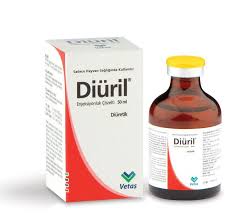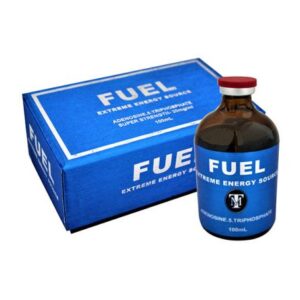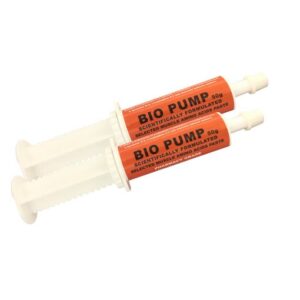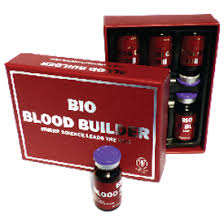Description
diuryl, is a high-ceilinged diuretic with a high-ceilinged saluretic type (salt throwing) effect, reducing the reabsorption of sodium / potassium / chlorine ions in the renal tubules (mainly in the upstream part of the Henle curve) and excreting liquid and electrolyte excretion from the body.
Diüril
Diuryl Injectable Solution
Veterinary Diuretic
COMPOSITION: Diuryl solution for injection is an odorless, almost colorless, sterile, clear solution. 10 mg furosemide.Diüril
PHARMACOLOGICAL PROPERTIES: Furosemide , which forms the active ingredient of diuryl, is a high-ceilinged diuretic with a high-ceilinged saluretic type (salt throwing) effect, reducing the reabsorption of sodium / potassium / chlorine ions in the renal tubules (mainly in the upstream part of the Henle curve) and excreting liquid and electrolyte excretion from the body. accelerates.
When diuryl is administered intravenously, the diuretic effect of furosemide starts in as little as 5 – 10 minutes and reaches maximum level in 30-60 minutes. The diuretic effect then begins to decline rapidly and disappears after 2-5 hours of application. When administered intramuscularly, the diuretic effect develops by a few minutes delay compared to intravenous administration; but the effect lasts longer.Diüril
Furosemide metabolizes rapidly after administration. Binding rate to plasma proteins is high. It does not accumulate in organs and tissues other than liver. After intravenous injection of furosemide, 2/3 of it is excreted by tubular secretion in the kidneys and the rest is excreted by the bile. Urinary excretion of the drug given in a single dose is completed in a short time. In cases of renal failure, the biological half-life and duration of action of the drug is considerably prolonged.
FIELD OF USE / INDICATIONS: Cattle, calf, horse, foal, cats and dogs are used in the following cases.
1) In the treatment of edema: skin, chest cavity, abdominal cavity, or general or local edema of the brain as a result of thrombosis, obstruction, blood pressure or trauma caused by heart failure or venous or lymphatic circulation due to obstruction due to venous congestion .
Protein deficiency edema (hypoproteinemia) caused by impaired protein metabolism, parasitism or renal proteinuria and liver dysfunction due to generalized skin edema and ascites .
Edema due to allergic, toxic, traumatic or inflammatory circulatory disorders such as pulmonary, cerebral edema or localized in the wound or operation shadow caused by contact with allergic or harmful substances .Diüril
Pathological edema of the breast and perineum in cows and mares or preputial or scrotal edema in male animals.Diüril https://enongvetmedication.com/





Reviews
There are no reviews yet.